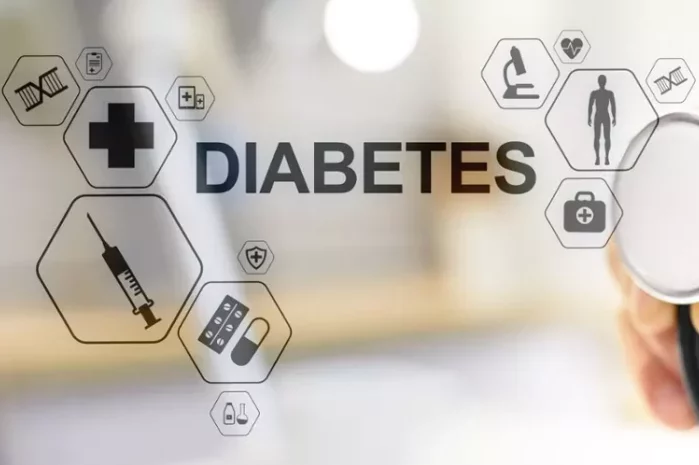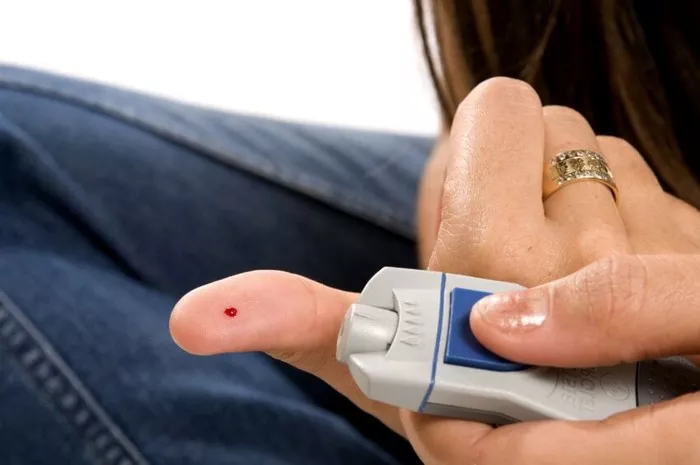Diabetes mellitus, a chronic metabolic disorder characterized by elevated blood sugar levels, affects millions of individuals worldwide. Among its various forms, type 1 and type 2 diabetes are the most prevalent. While they share similarities in symptoms and complications, they are distinct conditions with different underlying causes, risk factors, and treatment approaches. Understanding these differences is crucial for accurate diagnosis, effective management, and improved outcomes for patients. In this comprehensive article, we delve into the intricate distinctions between type 1 and type 2 diabetes, shedding light on their pathophysiology, clinical presentation, diagnostic criteria, treatment modalities, and long-term implications.
Pathophysiology:
Type 1 diabetes, formerly known as insulin-dependent diabetes or juvenile-onset diabetes, is an autoimmune disorder characterized by the destruction of pancreatic beta cells, which are responsible for producing insulin. The exact cause of this autoimmune response is not fully understood, but genetic predisposition and environmental factors, such as viral infections, may play significant roles. As a result of beta cell destruction, individuals with type 1 diabetes have an absolute deficiency of insulin, leading to uncontrolled hyperglycemia.
On the other hand, type 2 diabetes, previously referred to as non-insulin-dependent diabetes or adult-onset diabetes, typically develops due to a combination of insulin resistance and relative insulin deficiency. Insulin resistance occurs when the body’s cells become less responsive to insulin, impairing glucose uptake and utilization. Initially, the pancreas compensates by producing more insulin to overcome this resistance. However, over time, pancreatic beta cells may become exhausted, leading to decreased insulin secretion. Genetic factors, sedentary lifestyle, obesity, and unhealthy dietary habits contribute to the development of type 2 diabetes.
Clinical Presentation:
The clinical manifestations of type 1 and type 2 diabetes can overlap but also exhibit distinct features. In type 1 diabetes, symptoms often manifest abruptly and include excessive thirst (polydipsia), frequent urination (polyuria), unexplained weight loss, fatigue, blurred vision, and increased susceptibility to infections. These symptoms can rapidly progress to diabetic ketoacidosis (DKA), a life-threatening condition characterized by hyperglycemia, ketosis, and metabolic acidosis.
Conversely, type 2 diabetes may have a more insidious onset, with symptoms developing gradually or remaining asymptomatic for an extended period. Common signs and symptoms include frequent urination, excessive thirst, increased hunger (polyphagia), fatigue, blurred vision, slow wound healing, and recurrent infections. Many individuals with type 2 diabetes are diagnosed incidentally during routine health screenings or when complications arise.
Diagnostic Criteria:
Diagnosis of diabetes is primarily based on laboratory measurements of blood glucose levels. The criteria established by leading medical organizations, such as the American Diabetes Association (ADA) and the World Health Organization (WHO), guide healthcare professionals in identifying and classifying diabetes mellitus.
For type 1 diabetes, diagnostic criteria include:
Fasting plasma glucose (FPG) ≥126 mg/dL (7.0 mmol/L)
Random plasma glucose ≥200 mg/dL (11.1 mmol/L) in the presence of classic symptoms of hyperglycemia
Hemoglobin A1c (HbA1c) ≥6.5%
Type 2 diabetes is diagnosed when:
FPG ≥126 mg/dL (7.0 mmol/L) on two separate occasions
HbA1c ≥6.5%
Oral glucose tolerance test (OGTT) with a plasma glucose ≥200 mg/dL (11.1 mmol/L) two hours after ingesting 75 grams of glucose
Additionally, the diagnosis of diabetes should be confirmed by repeating the abnormal test on a different day, except in cases of unequivocal hyperglycemia with acute metabolic decompensation.
Treatment Modalities:
Management of both type 1 and type 2 diabetes revolves around glycemic control, prevention of acute complications, and reduction of long-term complications. However, treatment approaches differ significantly due to variations in pathophysiology and disease progression.
For type 1 diabetes, insulin replacement therapy is the cornerstone of treatment. Since pancreatic beta cells are destroyed, exogenous insulin must be administered via injections or insulin pumps to regulate blood glucose levels. Various insulin formulations, including rapid-acting, short-acting, intermediate-acting, and long-acting insulin analogs, are available to mimic physiological insulin secretion patterns.
In contrast, treatment strategies for type 2 diabetes encompass lifestyle modifications, oral antidiabetic medications, injectable therapies, and, in some cases, insulin therapy. Lifestyle interventions, such as dietary modifications, regular exercise, weight management, and smoking cessation, are fundamental in improving insulin sensitivity and glycemic control. Oral antidiabetic agents, including metformin, sulfonylureas, thiazolidinediones, dipeptidyl peptidase-4 (DPP-4) inhibitors, sodium-glucose cotransporter-2 (SGLT-2) inhibitors, and glucagon-like peptide-1 (GLP-1) receptor agonists, are prescribed based on individual patient characteristics, preferences, and comorbidities.
Long-term Implications:
Both type 1 and type 2 diabetes are associated with an increased risk of microvascular and macrovascular complications, which can significantly impact quality of life and mortality rates.
Microvascular complications primarily affect small blood vessels and include:
Diabetic retinopathy: Leading cause of blindness in adults
Diabetic nephropathy: Progressive kidney disease, potentially culminating in end-stage renal failure
Diabetic neuropathy: Nerve damage resulting in sensory, motor, and autonomic dysfunction
Macrovascular complications involve large blood vessels and contribute to cardiovascular morbidity and mortality:
Coronary artery disease: Increased risk of myocardial infarction (heart attack) and angina
Peripheral arterial disease: Impaired blood flow to the extremities, leading to claudication and limb ischemia
Stroke: Elevated incidence of ischemic and hemorrhagic strokes
Moreover, individuals with diabetes are prone to other complications, such as diabetic foot ulcers, lower limb amputations, gastroparesis, erectile dysfunction, and depression, necessitating comprehensive multidisciplinary care.
Conclusion:
In summary, type 1 and type 2 diabetes are distinct entities with differing etiologies, clinical presentations, diagnostic criteria, treatment modalities, and long-term implications. Type 1 diabetes results from autoimmune destruction of pancreatic beta cells, leading to absolute insulin deficiency, whereas type 2 diabetes involves a combination of insulin resistance and relative insulin deficiency, often associated with obesity and lifestyle factors. Early detection, prompt intervention, and ongoing management are essential in mitigating the burden of diabetes and preventing its devastating complications. Healthcare providers play a pivotal role in educating patients, promoting healthy behaviors, individualizing treatment regimens, and fostering a collaborative approach to diabetes care. By understanding the nuances of type 1 and type 2 diabetes, we can empower patients to lead fulfilling lives while effectively managing their condition.
Related topics:
Best Bread For Type 1 Diabetes



























